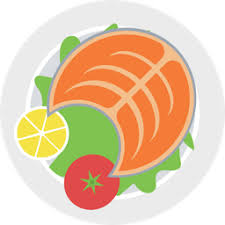A six-piece breakdown is probably the most straightforward method for handling an entire hare for braising, searing, or cooking in parts. This strategy yields six bone-in bits of hare — two front legs, two rear leg quarters, and two-seat segments — as well as two boneless pieces of tummy that can be cooked independently as a little kitchen nibble yet aren’t extremely significant, and the ribcage and spine for stock.
Begin by checking the bunny depression for any secret offal treasures. The kidneys, liver, and heart are in some cases included; just put those away assuming that is the situation. You can stick and barbecue them as a nibble later. With the pit cleared out, give the bunny a search with some paper towels or a spotless kitchen towel. You don’t need things slipping and sliding on a cutting board while butchering.
Stage 1: Remove the Front Legs
Position the hare on its side, with the goal that the front leg is nearest to you. Lift the advantage away from the body of the bunny, with the goal that you can see where the shoulder joint interfaces with the enclosure. Cut around the leg, keeping the blade edge against the enclosure. The leg will fall off without any problem.
Flip the bunny over onto its opposite side, and rehash the cutting system. Put the front legs to the side on your baking sheet.
Stage 2: Remove the Hind Legs
Eliminating the back legs of a bunny is basically the same as the most common way of eliminating the legs of a chicken. Hold the lower part of one leg with your spur of the moment, and pull the leg outward, away from the body, so you can cut between the region where the leg meets the body.
Hold the body consistent with one hand and with the other snatch the top piece of the leg and curve descending, away from the body, until the femur swiveling appendage jumps out of the attachment. Presently utilize your blade to eliminate the leg by slicing through the uncovered joint and riding the edge down the spine to the tailbone. Rehash with the other leg. In the event that you intend to braise the hare, you can isolate the leg quarters into leg and thigh pieces, similarly as you would while isolating the thigh from the drumstick on a chicken leg.
Stage 3: Remove the Belly
With every one of the four legs eliminated, you’re left with the bunny’s midriff. You’ll see two flappy pieces of paunch hanging off of the bunny’s substantial “saddle.” Unlike pork or sheep gut, there isn’t a lot of meat or fat in the hare gut. In any case, it’s still quite intense, when contrasted with the flank, and it’s very slender and hangs off the body, and that implies it won’t cook at a similar rate as the midsection. Therefore, it’s ideal to totally eliminate the paunch. Hold the fold of meat up with your non-prevailing hand and cut it off, trying not to take any of the flanks with it. Similarly, as with the offal, you can concoct the stomach as a tidbit.
Stage 4: Remove the Rib Cage
In the event that you’re freeloaded that bunny bacon isn’t plausible, I’m miserable to say that grill hare ribs aren’t in the cards by the same token. These creatures are little and lean, and there’s simply not much meat on their bones.
To eliminate the rib enclosure and upper spine, utilize your blade to slice through the layer around the main ribs to uncover the rib bones nearest to the seat. Stand the hare body up upward, with the neck bone against your board. Holding the seat in one hand, and the foundation of the rib confine in the other, pull downwards to break the spine.
Change to a blade or kitchen shears in the event that you’re not working with a honesuki (which has sufficient heave to slice through bone). Remove the ribs and afterward slice through the spine to isolate the rib confine from the seat. Contingent upon where you slice through the spine, you might be left with several vertebrae joined to next to no meat at the highest point of the seat. You can rehash the overwhelming system, and slice through to eliminate that part of the spine, or leave it appended assuming you like to expand how much meat in your braise.
Stage 5: Portion the Saddle
You’ve currently arrived at the finished product: the seat. A seat highlights the two midsections on one or the other side of the spine. It very well may be left bone-in, or the spine can be removed, and the boneless two-midsection piece can be moved for a meal (this is especially famous with sheep saddle). To dazzle an extraordinary somebody with a bunny midsection roulade, have at it, yet be cautioned that hare flanks are so little and slender that it takes a great deal of care to not overcook and dry them out when boned out. It’s genuinely normal in café kitchens to move them in caul fat with an end goal to forestall this destiny. Or on the other hand, you could simply abandon the bones for your seat, which will work out best for braising, searing, and simmering.
All you want to do all things considered is segment the seat by cutting it into cross-area pieces. Utilize a blade, or a mix of a blade and kitchen shears, to slice the seat down the middle through the spine. This will yield two huge, chicken thigh-size pieces, which are ideally suited for broiling. In the event that you’re braising, you can slice those pieces down the middle again for a more reasonable, Dutch broiler accommodating size.
That is the breakdown of the six-piece bunny breakdown. You’re currently prepared to get cooking or to continue on toward greater butchering projects. Separate a sheep. You do ewe.
